This is Chapter 3 in my series “The World of Jews in Ryazan: Beyond the Pale.” The introductory post about my grandfather is here.
For years my grandfather’s life in Russia was a huge unknown to me. The one bit of information I had was that Boris Bobroff had worked “as an engineer” in a factory in Ryazan before coming to the US in 1905 at the age of 22.
The factory, like everything about my grandfather’s life in Russia, felt romantically mysterious to me. But when my mother, Polly Bobroff, and I finally discovered the factory’s name, it turned out to be a completely unromantic mouthful: the Joint Stock Company of the Ryazan Agricultural Machinery and Railroad Equipment Factory. It was founded by Yekhiel Levontin in 1904.
Beyond that, we knew absolutely nothing, and couldn’t imagine what Boris Bobroff’s life might have been like in this small city southeast of Moscow. For years, my endless online searching turned up absolutely nothing about the factory or about my grandfather anywhere in Russia.
So it’s been with a profound sense of awe that I’ve begun to find bits of information about Levontin’s factory, and so to envision something of what my grandfather might have experienced there. One key to my search success was online tools that made it possible for me to use my now-rusty Russian reading skills to search Russian language websites.
One very important resource in my search has been the website of Ryazan province in Russia. To my utter amazement, this Russian language website has a photograph of Levontin’s factory. The photo is dated 1916, over a decade after my grandfather left Russia. The factory had grown in the intervening years, so it would have been somewhat different when he worked there. Still, it was eerie to see a photograph of this place which until now had been like a ghost to me. Suddenly the place where my grandfather worked over a century ago in Russia began to shimmer into focus.
In the photo, a man in a typical Russian belted shirt leans against the factory. A horse-drawn carriage harnass includes the traditional Russian bell-shaped shaft bow. (This type of shaft bow was also used to harness troika-pulled sleighs, see photo above.) It all felt very evocative to me.
On the factory sign in the photo we can read in the larger letters “Joint Stock Company of the Ryazan Factory.” The caption on the photo reads:
“Factory of Agricultural Machinery and Railroad Equipment. Original Location – on Seminary Street (not far from the Church of Boris and Gleb). 1916 photograph.”
Aha, some new information: according to this caption, the factory was located on Seminary Street. Happily, a search through the massive Ryazan website revealed several photos of that street. Like most of Ryazan’s thoroughfares, it was straight. Like many, it was wide. It appears to stretch off into the steppe beyond the city.
A present-day photo of Seminary Street (below) gives a wonderful sense of the kind of wooden buildings that originally housed Levontin’s factory. Parenthetically, it also shows a wood shingle roof, perhaps of the type made by Avrom Mesigal, who I’ve followed in other posts, here and here.

Wooden buildings on Seminary Street. Present day photo
Another source, though, gives a different street as the original location of Levontin’s factory:
“The history of the factory began in 1904, when the businessman Yekhiel Levontin bought two wooden houses on Malomeshchanskaia Street from the Ryazan merchants Kasin and Kolesnikova.
He [Levontin] lured six highly skilled workers, headed by the expert master Rudakov, from the Telepnev Factory.
He equipped six work places [in his new factory] with a manual lathe, a forge with manual bellows, and fourteen-[horse?]power diesel.
A notarized contract specifies that ‘the plant was to be arranged for the production of mechanical, iron, and other work….’ In 1905, the factory already employed 50 people. Their main products were plows, harrows, and various orders for the railroad.”

Russian peasant plowing fields. Use of hand plows continued well into the 20th century in Russia.
Because my grandfather worked at the factory in 1904 and into 1905 at the latest, he must have been one of its first workers. According to the letter of recommendation about him, signed by Levontin, Bobroff had been “hired as a worker but was performing the function of an engineer.”
In trying to envision Boris’s daily routines, I tend to seize on small details in the fragments I find. For example, from the description above, it sounds like a lot of the work was originally done by hand using the manual lathe and forge with hand-operated bellows, though part of the work was apparently powered by diesel. I wonder what aspect of this manufacturing process Boris Bobroff presumably helped to work out, given that he was doing engineering work.
According to another source, Levontin’s factory produced 82% of the harrows in European Russia, as well as single-plowshare plows and horse-drawn planters. The Russian-style plow and harrow can be seen in the painting below. Another source says that the railroad items manufactured at the factory were switches and crossings.
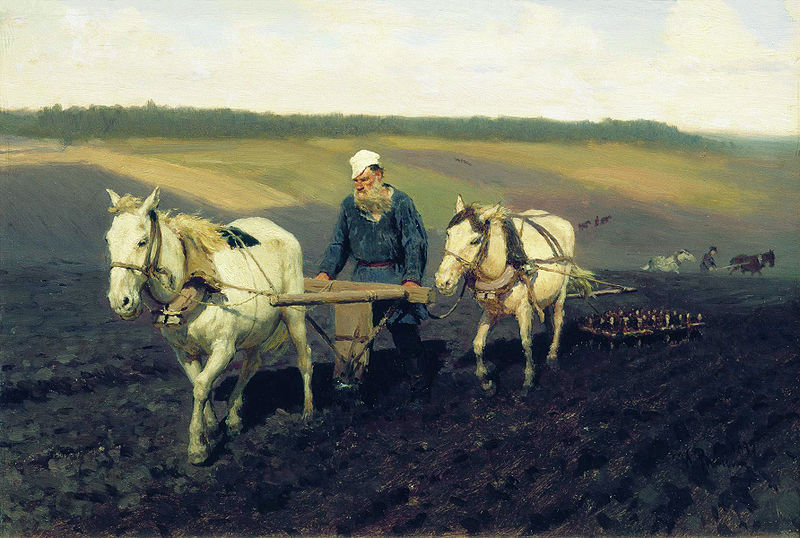
This painting by Ilya Repin shows the Russian plow and, in back of the 2nd horse, the harrow. Both types of equipment were made at Levontin's factory.
Which of these items did Bobroff work on? I hope I can find descriptions someday. I do know that, later on in the US, Bobroff received a number of patents on his designs for switches for his automobile directional signals. But I don’t know whether work on presumably much larger-scale railroad switches might have inspired his smaller patented versions.
By 1914 – 9 years after my grandfather had emigrated to the US – 250 people worked at the factory. One description at that time says “The main (plow) shop was located in the basement. The assembly shop was located on the 2nd floor of a new building.”
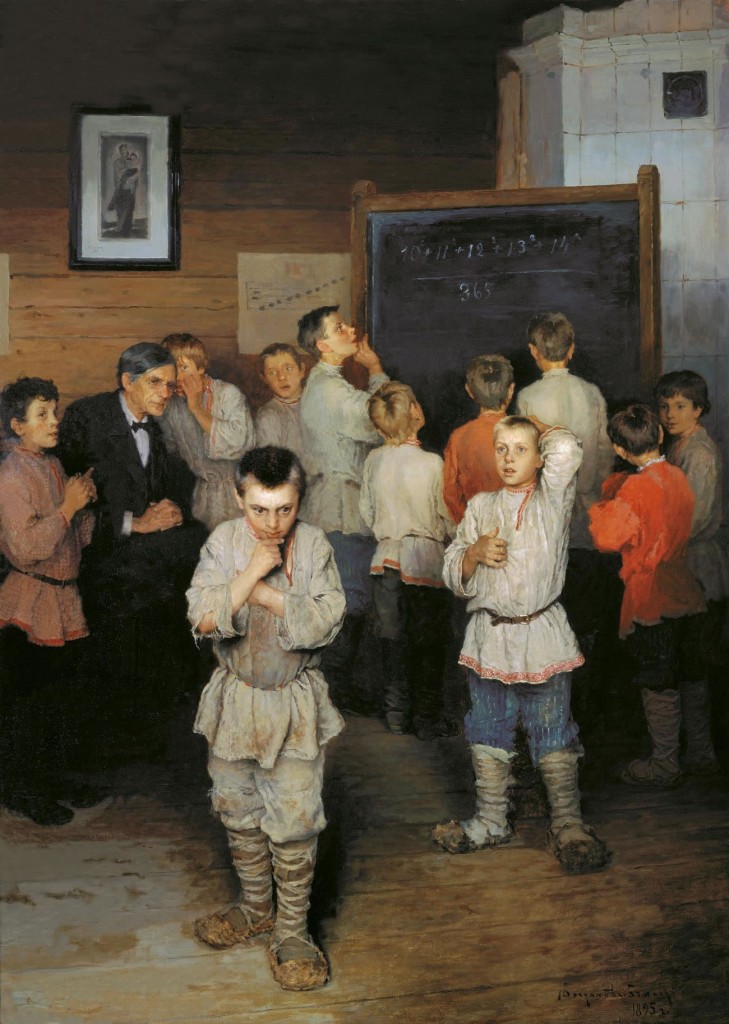
Russian rural school boys: Oral Sums, by N. P. Bogdanov-Bel'skii
A lovely last description of the inside of the factory in 1914 comes from a rural teacher who brought his students – girls and boys – into the city of Ryazan on a field trip from some distance away. The students had taken advantage of the government allowance to school children of a free train fare each year for field trips. They visited the Ryazan Provincial Museum, and were particularly interested (according to their teacher at any rate), by the agricultural exhibit section. A visit to the handicraft museum and later to the local cinema were followed by free tea and biscuits. The next day, the students visited the printing press of Ryazan Life, a local newspaper.
Last, the rural students trooped to Levontin’s factory, where they were welcomed and provided with two tour guides. The students were amazed at what they saw.
“Before their eyes opened the pages of factory life, completely unknown to the rural child. The strange noise, clatter, banging, the quickness of movement…. It was very instructive for the students to see how gradually plows, seeders, winnowers, iron harrows, and so on, were constructed. Students also saw the iron casting, where the bright red molten mass of iron flowed into ladles and was poured out into prepared forms.”
I can envision these children, who until now had only seen the plows and harrows in use in the countryside where they lived. Now for the first time, they were seeing how the implements were made in the far-off city.
On the train home, the children talked excitedly about what they had seen in the city. According to the author of this article,the boys most of all liked the cinema and the agricultural machinery factory, while the girls had other favorites.
Surely these kids were too excited by all the startling new sights they had seen at Levontin’s factory to think about its owner being Jewish – if anyone had even mentioned it to them. But I wonder whether, as they became adults, they looked back on their vivid memories of the trip and associated the factory with the ingenuity of its Jewish founder. How did they put their childhood impressions together with anti-Semitic views they may also have heard around them?
Again, this description of Levontin’s factory comes from a time after my grandfather had left, when it had experienced rapid growth. I hope at some point to find similar descriptions of what it was like when he worked there.




















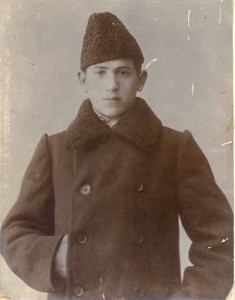
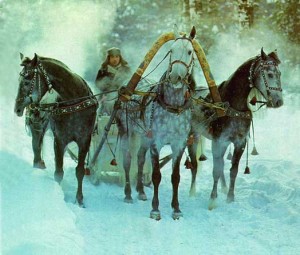
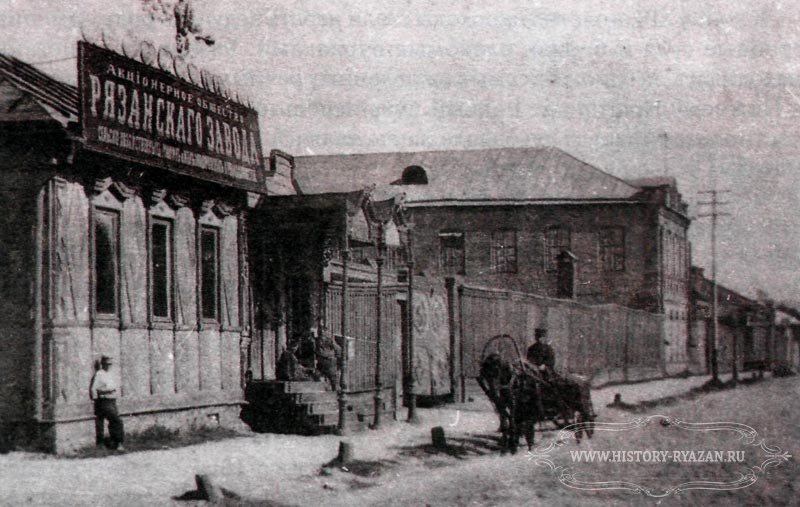
order arimidex 1mg pill biaxin online buy 50mg viagra